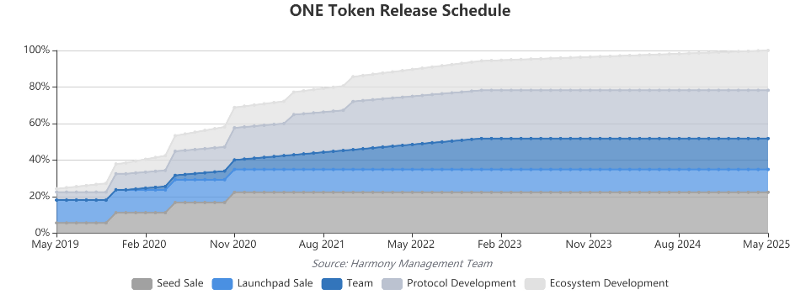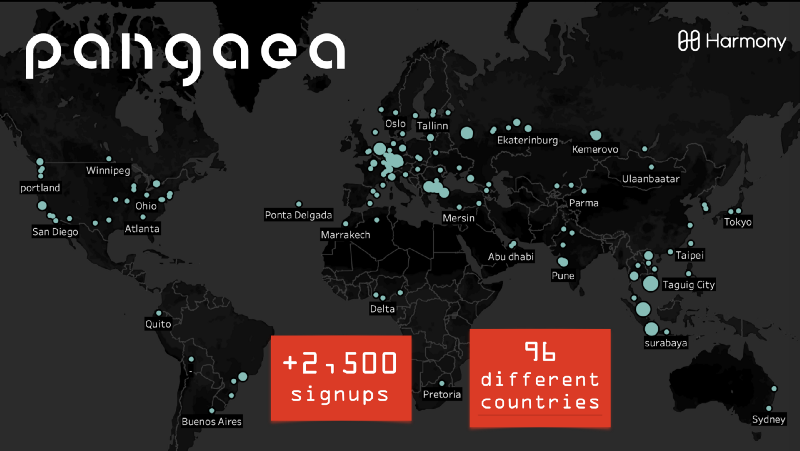Meet Harmony One: a fully scalable and decentralized blockchain with key innovations such as state sharding — If you like it, join Pangaea!
Hi everyone, 🖖
In today’s article, we will introduce you to the Harmony One blockchain and the Pangaea initiative launched by Harmony in collaboration with Binance.
We are pleased to announce to you that Stakin joined the Pangaea staking competition!
What is Harmony One?

Harmony One is a blockchain protocol to deliver scalability and decentralization thanks to crucial innovations in state sharding and peer-to-peer networking.
If blockchain wants to reach mass adoption, it needs to sustain a large number of transactions per second (TPS). Otherwise, it might never be able to offer a durable alternative to current payment systems. In the current state, the Ethereum network can process a maximum of ~15 TPS, far from Visa 50,000 TPS capacity. In the past years, various blockchain projects have tried multiple techniques to solve this scalability issue. Often, this requires compromise on decentralization (fewer nodes) or security. One method that does not compromise on such is sharding: sharding entails the fragmentation of datasets in smaller datasets, called “shards.” It creates multiple groups (i.e., shards) of validators and lets them process transactions concurrently. As a result of sharding, adding more nodes increases the TPS of the network.
For scalability, Harmony sharding uses an energy-efficient Proof-of-Stake protocol with a secure distributed randomness generation protocol using VDF (Verifiable Delay Function), fast block propagation, state-sharding, and Kademlia cross-shard routing. Thanks to these, in its testnet, Harmony managed to achieve 118,000 TPS with around 44,000 nodes 🚀.

Their value proposition is to help businesses build marketplaces of fungible and non-fungibles tokens while preserving user privacy thanks to zero-knowledge proofs for data sharing.
Harmony is implementing deep sharding with innovations on both protocol and networking layers of blockchain by introducing :
- State Sharding: Harmony shards not only the transaction and communication layer, but also the consensus layer. With state sharding, nodes do not have to hold all the blockchain data (significantly lowering hardware requirements), as these can locate other nodes that are specific to a transaction and transact only with these nodes in the consensus process.
- Highly scalable and Fast BFT (Byzantine Fault Tolerant) consensus using BLS (Boneh-Lynn-Shacham) multi-signatures: Harmony’s consensus is a variant of PBFT. In PBFT, one leader is elected and broadcasts its proposal to all of the validators, which in turn aired their votes on the proposal to everyone else. In Harmony’s FBFT consensus, instead of asking all validators to broadcast their votes, the leader runs a multi-signature signing process among all the validators to collect their votes as part of the multi-signature and then transmits it. Compared to PBFT, FBFT dramatically simplifies the communication complexity, and thus allows for better scalability and security.
- Secure distributed randomness generation protocol using VDF (Verifiable Delay Function): Nodes are randomly assigned to shards, reducing the risk of any attack. With VDF, similarly to what will be implemented in Ethereum 2.0, the revelation of the random number generated by the consensus leader node is delayed to increase security.
- Adaptive PoS sharding for robust network security. The threshold of stakes required for a node to join the network is adjusted based on the volume of total staking in a way that malicious validators cannot concentrate their power in a single shard, and can never occupy more than 1/3 of the voting shares. Moreover, the threshold is low enough so that small validators can still participate in the network and earn rewards.
- Kademlia routing and erasure encoding for optimal network performance: Each node in the Harmony’s network maintains a routing table that contains nodes from different shards. Compared to traditional gossipping, when nodes in a specific shard want to send a message to another shard, they will look at the routing table and send the message to the nodes with the closest shard ID.
Last but not least, Harmony is built by a 14 person team featuring several previous engineers from Apple, Google, Amazon, and some PhDs.
Tokenomics

Harmony One was a BEP2 token built on Binance Chain while in the Testnet phase and got famous thanks to their Initial Exchange Offering (IEO) conducted on Binance in May 2019.
Harmony One native token aligns the incentives of different stakeholders, developers, and businesses while allowing them to build open marketplaces of fungible and non-fungible tokens and assets. Furthermore, the future application of zero-knowledge proofs will enable Harmony to become a data-sharing platform that can overcome the conflicting problem plaguing many information and data markets.
The Harmony token will function in the following aspects of the protocol:
- Staking: By holding ONE token, you can participate in the POS consensus, earn block rewards and transaction fees
- Fees: ONE token is used to pay for transaction fees, gas and storage fees
- Voting: The ONE token can be used to vote for on-chain governance of the protocol
With a total token supply of 12,600,000,000 ONE, the distribution is planned in the following manner. In essence, 22.4% went to the seed sale tokens, 12.5% to the launchpad sale, 16.9% is going to the team, 26.4% for the protocol development, and 21.8% into the ecosystem.
Below it’s a chart representing the number of all ONE tokens that are intended to be released into circulation every month.

It’s important to note that team tokens are locked until 2020 with four years vesting.
Introducing Pangaea

Pangaea is a staking competition organized by Harmony One in collaboration with Binance. It allows everyONE to interact with the Harmony Protocol and test the limitations of the technology. It’s purely experimental and will have its currency for playing and bookkeeping.
The initiative will be designed in 3 phases from August 15th to September 25th with a possible chance to win a sponsored node on Harmony Mainnet or other ONE rewards.
Phase 1 (Aug 15th — 23rd): phase 1 is the launch phase. The goal is to allow as many people as possible to set-up a node and join the network.
During this phase, you will only need to monitor the node, and you will be able to claim daily token from the faucets and check your balances and different block rewards.
Phase 2 (Aug 23rd — Sep 3rd): phase 2 will allow people to claim rewards earned from Phase 1, but nodes will also have to complete some “missions” such as sending transactions or interact with the staking smart contract.
During this phase, people will compete on some key metrics such as uptime, latency, or block rewards.
Phase 3 (Sep 3rd — 25th): The last phase will consist of testing the limits of security and stability of the network by incentivizing evil behavior.
In this phase, you will need to organize individual or group attacks to find and report security bugs.
There will also be three different paths to join the Pangaea :
- Player: Run a node, maintain a high-quality uptime, and secure Pangaea to get a chance to become a node in Mainnet with its stake sponsored by Harmony or other prized.
- Mayor: Participate in the community by spreading the word about this initiative and support newbies player.
- Gambler: This will happen during the 3rd and last phase. Harmony is designing a betting game on Binance DEX for ONE holder; more details should come soon.

As of August 15th, more than 700 nodes were already running. You can check the latest map of Harmony Pangea nodes here. Among these, 55% never run a blockchain node before!
Harmony will make sure that everyone who participates in the initiative is rewarded for their work, so different rewards will be available during the competition.
You can check them on the Pangaea documentation.

If you want to join, don’t forget to reserve your seat on the waitlist!
Links & Materials
- Harmony Whitepaper
- Harmony: One Pager
- Harmony: Binance Research
- Harmony’s Staking & Incentive Design
- Introducing Harmony Effective PoS
- Introducing Pangaea
- Pangaea documentation
- Pangaea Phase-1 started
- Pangaea Telegram
Any question? Feel free to reach us on Telegram or Twitter.
DISCLAIMER: This is not financial advice. Staking and cryptocurrencies investment involves a high degree of risk, and there is always the possibility of loss, including the loss of all staked digital assets. Additionally, delegators are at risk of slashing in case of security or liveness faults on some PoS protocols. We advise you to DYOR before choosing a validator.


Join the conversation